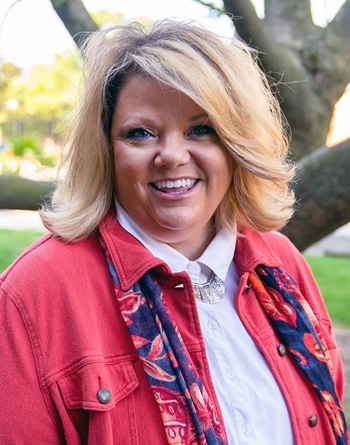No Time to Panic...
by Tom Hanlon / Sep 7, 2022

...But a time to step up and lead with courage to find solutions to the state of Illinois’ teacher shortage, says Nancy Latham, executive director of the Council on Teacher Education in the College of Education at the University of Illinois Urbana-Champaign.
Buzz Lightyear, trying to calm his pal, Woody, during a tense moment in the movie Toy Story: Sheriff, this is no time to panic.
Woody: This is a perfect time to panic!
Some data from a Fall 2021 survey taken by the Illinois Association of Regional Superintendents of Schools:
- 88 percent of schools say they have a teacher shortage problem, and 77 percent report the shortage is getting worse.
- 93 percent of districts expect the shortage will worsen over the 2023 and 2024 academic years.
- More than 2,000 positions are either not filled or filled by someone not qualified to teach there—more than double the amount reported from the last school year.
- 96 percent of schools report a substitute teacher shortage problem.
- More than 400 classes were canceled, and nearly that many sent online, because schools simply had no one to teach them in person.
It might not be a perfect time to panic, as Woody suggests. But it’s time to take action.
"Perfect Storm"
“This is a perfect storm that has been about three decades in the making,” says Latham. “We’ve been de-professionalizing the field of teaching, we’ve been blaming teachers, we’ve not been resourcing teachers and schools the way we should, we’ve been increasing mandates and expanding the boundaries of what teachers are responsible for way beyond the education of children.”
 Teachers, Latham says, have become counselors, family service workers, social workers, parent trainers, nutrition experts, health referral specialists, and so much more. All at a time when their teaching stress is expanding and they are being blamed for low test scores and held to unfair expectations, she adds.
Teachers, Latham says, have become counselors, family service workers, social workers, parent trainers, nutrition experts, health referral specialists, and so much more. All at a time when their teaching stress is expanding and they are being blamed for low test scores and held to unfair expectations, she adds.
Latham, now in her thirty-fourth year as an educator and a long-time teachers’ advocate who is regularly sought out by major media outlets for her views on the teaching shortage and high attrition rates, doesn’t see a quick fix.
“Problems that are three decades old are not going to have a short, easy turnaround,” she says. “In fact, there’s a whole body of research that shows over years and years that teachers who are prepared in alternative programs—meaning programs that water down the road to licensure—are twenty-five percent more likely to leave the field. We’re throwing darts at the problem, even though the research powerfully says those kinds of things don’t work.”
But that hasn’t stopped states such as Arizona, which recently passed a law allowing people with associates’ degrees to teach with a provisional certificate as they work toward obtaining their licensure.
“Other states are doing things like saying if you or your spouse are a veteran, you can observe a teacher and teach for five years while you work toward a degree,” Latham says. “Now, I think veterans have unbelievable skills—but that doesn’t mean they are ready to teach any more than they are ready to set a broken leg.”
These types of band-aid fixes, she says, creates a Peace Corps model. “A teacher is going to get very marginally, barely legally, quasi-prepared to teach, and they’re going to teach for three to five years, and then they’re going to exit and get a ‘real job’ or whatever,” she says. “I have many friends in corporate America who are telling me that their company is full of former teachers.”
Factors Impacting Shortage
Latham has conducted a lot of her own research on teacher shortage and attrition rates and has seen many similar studies.
“We’ve really got a trifecta going here,” she says.
-
Shrinking pay, rising costs
“Teachers’ salaries and benefits have never really changed in any substantive way,” Latham says. “In fact, when you bring it up against the cost of living, it has probably gone down. But the cost of the degree and the cost to practice the profession has only gone up.”
She notes that many teachers are leaving the field because they simply can’t support their family and build any sort of retirement as a teacher. “It just punches me in the gut,” she says. “We’re becoming a profession where you land for five to seven to ten years and then you move on to ‘real life.’”
Three years ago, Gov. JB Pritzker signed legislation raising teachers’ minimum salaries from $32,076 in 2020 to $34,576 in 2021 to $37,076 in 2022. In 2023, minimum salaries will bump to $40,000.
“Any move is a good move,” Latham says, “but we need to do more. While an improvement, these figures are no longer sufficient. Teachers need financial security.” She lists earnings potential, the ability to pay back educational loans, and benefits and retirement that are secure and sustaining as foundational elements of that financial security. “Teachers also need a working environment that is adequately funded so they are not required to supplement that funding out of their own pockets—and a working environment that is safe, secure, and healthy,” she says.
-
Leaking buckets
“Our infrastructure is very fragile,” she says. “Our attrition rates are higher than in other professions. We look at it as a bucket with holes in the bottom. In some eras or years, the holes would expand, in some they would tighten up. Or they’d be focused in certain areas, like rural schools, or inner-city schools, or special education or math or science. Now, the holes in the bottom of the bucket have pretty much equally expanded, so everyone is getting hit really hard, and that’s a shift.”
Administrators typically haven’t felt the leaking bucket impact that strongly, though, because preparation programs were pouring new candidates into the bucket. “We could keep that flow going,” Latham says. “But now those pipelines are drying up. So, we’re reaching a critical point.”
It’s critical not just from a numbers standpoint, she adds, but from a mentoring and growth standpoint. “You need veteran teachers and coaches at the mentoring stages, you need teachers at all stages for it to be healthy,” she says.
-
Pandemic impact
The pandemic has accelerated teacher retirements. “A lot of teachers were in that three-, four-, five-year window of retiring, and COVID compressed that,” Latham says. “I don’t know how long we’re going to be dealing with that fallout.”
"Incredible Teachers"
As difficult as the pandemic has been on students and teachers alike, it has brought to light a few truths about teachers, Latham notes.
“One, it showed that we can’t be everything to everybody, that we weren’t equipped to keep doing what we shouldn’t have been doing to begin with,” she says. “And two, it showed how amazing teachers and administrators are. I saw the most amazing things, the most creative ideas, incredible service to students and families, incredible, sacrificial acts. In my thirty-plus years in education, I didn’t think teachers could amaze me more than they have already—but they did.”
Long-term Answer: Courageous Decisions
So, what can the state of Illinois do to stop the holes in the buckets from expanding and to keep properly-prepared teachers where they belong—in the classroom?
“If I had an answer to that, we’d be off to the races,” Latham jokes. “As I mentioned, we need to improve teacher salaries and benefits, make the benefits something they can count on. Teacher retirement used to be a pull into the field, but it no longer is in Illinois.
“What we really need is folks with courage to address the issues, with their plumbline being what’s best for learners and the families we serve. We don’t need the political sound bite, the easy-to-swallow answer, the one that won’t cost any money or make anyone uncomfortable. We need folks with the courage to come up with real solutions.”
The College's Role in Battling Attrition
The College of Education, Latham notes, is actively battling the current teacher shortage and high attrition rates in a few keys ways.
“Our most important and consistent strategy is providing the highest quality teacher preparation programs, not only through our coursework but also through our embedded clinical components as well,” she says. “The research clearly shows that high-quality teacher preparation significantly impacts a teacher’s persistence in the field.”
The College, Latham says, ensures that its programs are always on the cutting edge of preparation and provides its students the foundation they need to not only persist in the field but to lead change and direction as well.
“We further provide professional development for in-service teachers to support and sustain them in their classrooms through the Illinois New Teacher Collaborative’s annual New Teacher Conference and the annual Leadership Conference,” she adds. “These longstanding offerings serve educators across our state at two pivotal points, our newest teachers and our educational leaders.”
Latham is central in leading the charge to push for legislative change to provide teachers the support, financially and otherwise, that they need to do what they want to do: educate children.
“Much of this work is centered in the Council on Teacher Education,” says Latham, who serves as the council’s executive director. The council is housed in the College and oversees 31 professional educator programs on campus. “I work with legislators and state leaders on mandates and proposed legislative solutions through the guidance of our legislative liaisons.”
Hopeful for the Future
For all the problems facing the field in the state of Illinois, Latham remains hopeful for the future.
“We have a lot of work to do to make sure this problem isn’t worse in five years and is actually better,” she says. “But I firmly believe that we have the most amazing teachers and teacher preparation programs across the state. We have a strong, collegial group of teacher preparation program leadership that works together across problems and issues, and that has served to keep us strong.
“So, I have great hope in that. I have great hope because I know that teachers make a difference in learners’ lives every day. And we have to protect that. We can’t take it for granted.”